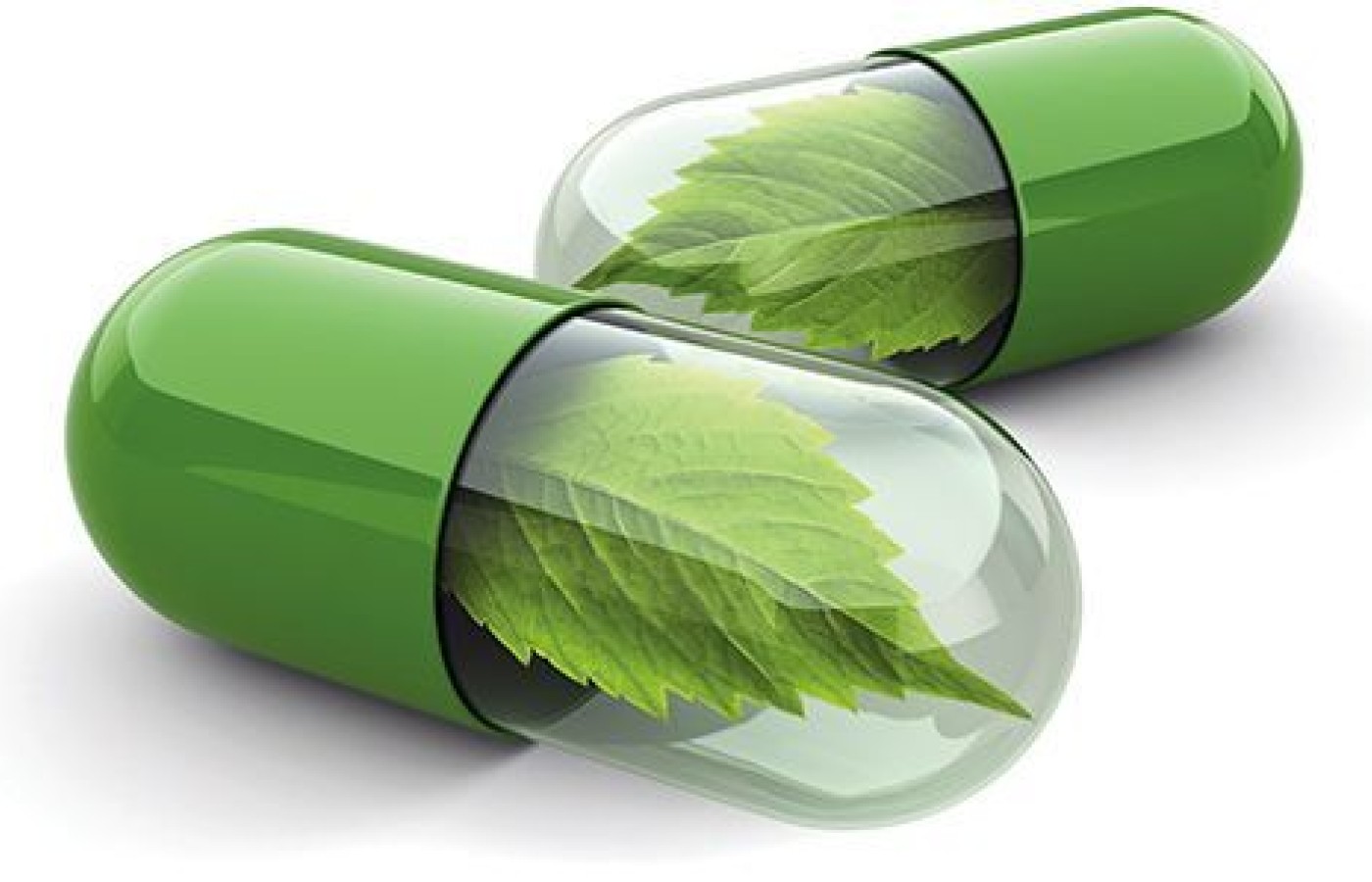Some doctors thrive in a personality-based clinic and have a loyal following no matter what services or equipment they offer, but for most chiropractic offices who are trying to grow and expand, new equipment purchases help us stay relevant and continue to service our client base in the best, most up-to-date manner possible. So, regarding equipment purchasing: should you lease, get a bank loan, or pay cash?
Are Herbs Useful for Chronic Pain?
The human nervous system is what makes us special, but our greatest strength also makes us vulnerable: witness the growing incidence of chronic addictions, anxiety, depression, sleep disorders and chronic pain syndromes. Many people suffering these problems feel the need to resort to pharmaceutical drugs, but the side effects of these often outweigh the benefits.
When it comes to needing support for pain, should it just be a choice of a heavy drug or nothing at all? What if there were a credible third option using herbs, based on either clinical evidence or long traditional use; one that will not impair performance and allow patients to work through our adversity?
This might sound too good to be true. Aren't herbs too gentle to effectively address these serious challenges? Let's explore the surprising strength of plants as a credible third option for pain and discomfort from a variety of health problems. They may not always work, but in my experience are certainly worth trying.
Herbs for Pain: A Little History

Historically, herbs have always been used for pain: opium and aconite are some key examples. These are powerful and potentially dangerous herbs, and their therapeutic use is generally highly controlled. But both recent research and traditional use suggest milder herbs also can play a valuable role, keeping in mind that the control of pain is only one aspect of any treatment; and the goal of a good herbal intervention is to treat and alleviate the cause of the pain wherever possible.
Pain Sources and Conventional Drug Treatment
From a functional perspective, rather than a strict medical classification, there are four key sources of pain:
- Inflammatory pain largely associated with tissue injury, often involving prostaglandin generation, such as osteoarthritis and sports injuries.
- Inflammatory pain generated by autoimmunity and auto-inflammation; for example, rheumatoid arthritis and lupus.
- Pain due to muscular tension and/or spasm, including such problems as dysmenorrhea and tension headaches.
- Pain due to nerve interference (pressure, impingement), neuralgia or nervous debility including central effects such as "wind-up syndrome," sciatica, cancer pain and the pain associated with fibromyalgia syndrome (FMS).
Conventional drugs used for each of these categories are largely as follows:
- Nonsteroidal anti-inflammatory drugs (NSAIDs)
- Corticosteroid drugs
- Antispasmodic drugs
- A variety of drugs including opiates, anticonvulsants and even tricyclic antidepressants
Herbal Alternatives for Pain
There are a number of herbs that are used in corresponding way for these pain / discomfort categories. This does not mean such herbs act in an identical (or even similar) way to the aforementioned drugs, although sometimes they do; for example, antispasmodic herbs such as Corydalis and cramp bark. Here are some key examples:
- Inflammatory pain: Boswellia, willow bark, ginger, turmeric, celery
- Autoimmunity: Rehmannia, turmeric, Bupleurum, feverfew
- Spasm pain: kava, Corydalis, cramp bark, wild yam, Californian poppy
- Neuralgic pain: St. John's wort, Californian poppy, Corydalis, Jamaica dogwood
The herbs in pain categories 1-3 above have been well-described, so let's focus on the herbs listed in category four, starting with Eschscholtzia californica (Californian poppy.) This herb is a member of the poppy family and contains some typical alkaloids of this family. But the main alkaloids, californidine and eschscholtzine, are fairly unique to this species. According to Davis (of Parke-Davis), in the 1890s it was: "an excellent soporific and analgesic, above all harmless" and "the effect produced ... is the same as morphine." The Eclectic physicians regarded Californian poppy as a "valuable" analgesic and mild sedative for "quieting pain and producing calm sleep."1 It was applied for these activities in patients when the use of a strong narcotic was inadvisable,2 and "without the dangers attending opiates."1 Regular and prolonged use was reported not to be addictive or to impair mental functioning.2
Corydalis tuber (Corydalis ambigua) is commonly used in Chinese medicine for pain relief, especially organ pain. It contains around 20 alkaloids, but the most potent analgesic is tetrahydropalmatine (THP). The analgesic potency of the herb is 1-10 percent of opium, depending on the study.
THP does not interact with opioid receptors and appears to interact with the dopaminergic system (as a dopamine antagonist). Clinical studies on THP have demonstrated analgesic effects in neuralgia, dysmenorrhea and headaches.3 THP at 120 mg/day reduced withdrawal symptoms in a trial involving 120 heroin addicts.4 The dopamine antagonism of THP is leading to its ongoing investigation as a support to reduce craving in addiction. Use of extracts of the whole Corydalis tuber does require repeated and high doses for analgesic effects.
The bark of Jamaica dogwood (Piscidia piscipula) has been used traditionally in Western herbalism as an analgesic, sedative and antispasmodic. Traditional indications include:5-8
- Insomnia, particularly when due to neuralgia or nervous tension, or when prolonged
- Restlessness
- Neuralgia, particularly sciatica; neuralgia associated with the kidneys, abdomen, ovaries, trigeminal nerve and eyes
- Migraine; dysmenorrhea
- Mild relief of abdominal, renal or gallbladder pain
- Muscle spasm, rheumatism, toothache, earache, painful affections of the eye, pain associated with fracture
- Whooping cough; to relieve spasms attributable to asthma
In addition to its well-known, evidence-based use for depression, St. John's wort (Hypericum perforatum) is traditionally used for neuralgic pain. In my clinical experience, it can work well in higher doses in certain patients with, for example, sciatica or trigeminal neuralgia.
There is not much to go on here from clinical studies. However, while a randomized, double-blind, placebo-controlled trial in 54 patients reported no significant overall effect on pain of polyneuropathy, there was a good trend toward a lower total pain score with the group receiving St John's wort. Also relevant here was the dose, which was only 900 mg of 6:1 extract per day. (For neuralgic pain, I tend to recommend 1,200 to 1,800 mg/day of such an extract.) In addition, complete to moderate pain relief was in fact experienced by nine patients taking St. John's wort, compared to just two on placebo (P=0.07).9
All of the herbs mentioned in this article can be a useful third option for the types of pain described under category 4 above. They may need to be used in high or repeated doses, but in my clinical experience, they are safe and surprisingly effective, with beneficial effects in pain relief seen in cases of recurrent tension headache, trigeminal neuralgia, sciatica, interstitial cystitis and FMS, to name a few examples.
References
- Felter HW, Lloyd JU. King's American Dispensatory, 18th Edition, 3rd Revision. 1905; reprinted by Eclectic Medical Publications, Portland, Ore., 1983.
- Cheney RH. Quart J Crude Drug Research, 1963;3:413-413.
- Chang HM, But PP. Parmacology and Applications of Chinese Materia Medica. Singapore: World Scientific, 1987.
- Yang Z, Shao YC, Li SJ, et al. Medication of l-tetrahydropalmatine significantly ameliorates opiate craving and increases the abstinence rate in heroin users: a pilot study. Acta Pharmacol Sin, 2008;29(7):781-788.
- Felter HW, et al., Op Cit.
- British Herbal Medicine Association's Scientific Committee. British Herbal Pharmacopoeia. Bournemouth, 1983.
- Ellingwood F, Lloyd JU. American Materia Medica, Therapeutics and Pharmacognosy, 11th Edition. Naturopathic Medical Series: Botanical, Volume 2. First published in 1898; reprinted by Eclectic Medical Publications, Portland, Ore., 1983.
- Wren RC. Potter's New Cyclopaedia of Botanical Drugs and Preparations. First published in 1907; reprinted by C.W. Daniel Company Limited, Essex, England, 1989.
- Sindrup SH, Madsen C, Bach FW, et al. St. John's wort has no effect on pain in polyneuropathy. Pain, 2001;91(3):361-365.



